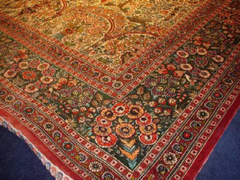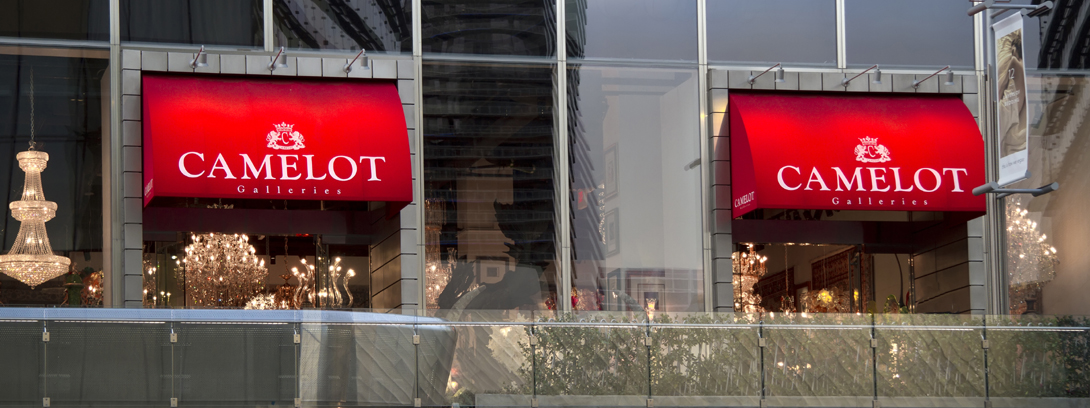 ORIENTAL RUGS AS ART Rugs are art, and they also happen to be useful as floor covering. Buy an oriental rug because you appreciate its art, using the same criteria that you would use to buy a painting. Do not buy an oriental rug just to match your decor, lest the rug outlast the decor and you will be stuck with a decorative white elephant. Colors and fashion change but fine art, fine jewelry, and fine rugs are always in style.
ORIENTAL RUGS AS ART Rugs are art, and they also happen to be useful as floor covering. Buy an oriental rug because you appreciate its art, using the same criteria that you would use to buy a painting. Do not buy an oriental rug just to match your decor, lest the rug outlast the decor and you will be stuck with a decorative white elephant. Colors and fashion change but fine art, fine jewelry, and fine rugs are always in style.
The name or type by which an oriental rug is sold tells little about where the rug was woven, how old it is, or its quality. Tabriz…Heriz, Kerman…Kashan, Beluchi…Serapi, Bokhara…Bergama–none of these names define quality. They are names that throughout history have been associated with rug weaving, either geographically or commercially, but these terms are not specifically defined through oriental rug weaving. Rug dealers have attached them to their products to legitimize their claims about their rugs; but, the names are irrelevant to the value of the rugs, unless they are accompanied by information, such as knot count, pile fiber, condition, etc., which defines the quality of the specific rug in question.
COMMONLY — USED DESIGN NAMES The names associated with oriental rugs are more suited to describing rug design than rug quality. We acknowledge that agreement on definitions for oriental rug design names is elusive. The following definitions are necessarily brief.
Aubusson (AH bu sawn). Depiction of French floral tapestry
Bakhtiari (bok tee ar ee). Rectangular panels inlayed with intricate flowers
Beluchi (bel oo chee). Naive geometric designs, usually in dark colors
Bidjar (bee jar). Intricate repeating diamond or “fish tail” design
Bokhara (bo car aa). Repeating polygonal “elephant foot” medallions
Caucasian (caa ca shun). Bold geometric design. Esthetic floral. Stylized free flowing floral patterns
Hamadan (hom aa don). Bold geometric pattern with background detail
Hatchlou (hatch loo). Four geometric panels separated by internal borders
Herati (her aa tee). Intricate repeating diamond or “fish tail” design
Heriz (her eez). Large geometric medallion extending to border. Holy book. Tibetan design depicting manuscript canister pattern. Hunt scene. Intricate depiction of animals, trees, and mounted huntsmen
Isfahan (iss faa hon). Intricate floral field with round central medallion
Joshaghan (josh a gon). Geometric repeated diamond shaped flowers. Jungle scene. Intricate depiction of animals, trees, and flowers
Kashan (kash on). Intricate leaf and tendril with no central medallion
Kerman (ker man). Intricate central medallion with no design in field. Ming. Sculpted central medallion with separate floral sprays in field
Mir (meer). Intricate repeating Paisley shaped “botehs” in field
Nain (nine). Intricate floral field with round central medallion. Pictorial. Woven depiction of a scene or portrait. Prayer rug. Directional depiction of a Mirhab or prayer niche
Sarouk (sa ruke). Intricate, separate floral sprays in field
Senjabi (sen jaw bee). Intricate rendition of ceramic tile inlay
Serapi (sir aa pe). Large geometric medallion with geometric tendrils
Shiraz (sheer oz). Geometric medallions and flowers
Tabriz (taa breez). Central medallion with leaf and tendril field. Tabriz fish. Intricate Herati “fish tail” pattern from Tabriz, Iran
Tibetan. Woven depiction of Tibetan or Buddhist iconography. Tiger. Woven pictorial or symbolic representation of a tiger
Ushak (oo shak). Intricate geometric floral and vine pattern
War rug. Depiction of weapons or military activity.


























